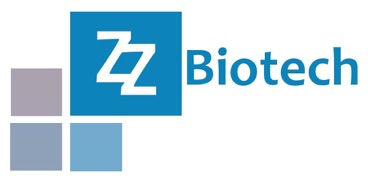预约演示
更新于:2025-05-07
protein C x PAR-1
更新于:2025-05-07
关联
1
项与 protein C x PAR-1 相关的药物作用机制 F2R激动剂 [+1] |
在研机构 |
原研机构 |
在研适应症 |
最高研发阶段临床1期 |
首次获批国家/地区- |
首次获批日期1800-01-20 |
4
项与 protein C x PAR-1 相关的临床试验NCT05484154
A Phase 3 Study to Evaluate the Efficacy and Safety of 3K3A-APC in Combination with Tissue Plasminogen Activator, Mechanical Thrombectomy, or Both in Subjects with Moderate to Severe Acute Ischemic Stroke
The purpose of this study is to evaluate the efficacy and safety of intravenous doses of 3K3A-APC, a recombinant variant of human activated protein C (APC), in the treatment of acute ischemic stroke following treatment with thrombolysis, mechanical thrombectomy or both.
开始日期2024-10-01 |
申办/合作机构  ZZ Biotech LLC ZZ Biotech LLC [+4] |
NCT05039268
A Phase 2 Open Label Trial of 3K3A-APC in Amyotrophic Lateral Sclerosis
Phase 2 open label trial to investigate the safety and potentially efficacy of 3K3A-APC in patients with Amyotrophic Lateral Sclerosis (ALS).
开始日期2021-11-25 |
申办/合作机构  Macquarie University Macquarie University [+1] |
NCT02222714
A Multi-center, Phase 2 Study Using a Continual Reassessment Method to Determine the Safety and Tolerability of 3K3A-APC in Combination With tPA, Mechanical Thrombectomy or Both in Moderate to Severe Acute Ischemic Stroke
The purpose of this study was to evaluate the safety, pharmacokinetics (PK) and preliminary efficacy of multiple ascending intravenous doses of 3K3A-APC, a Recombinant Variant of Human activated protein C (APC), in in the treatment of acute ischemic stroke following treatment with recombinant tissue plasminogen activator (tPA), mechanical thrombectomy or both.
开始日期2014-10-01 |
申办/合作机构  ZZ Biotech LLC ZZ Biotech LLC [+4] |
100 项与 protein C x PAR-1 相关的临床结果
登录后查看更多信息
100 项与 protein C x PAR-1 相关的转化医学
登录后查看更多信息
0 项与 protein C x PAR-1 相关的专利(医药)
登录后查看更多信息
251
项与 protein C x PAR-1 相关的文献(医药)2025-05-01·Biochimie
Interaction and cleavage of cell and plasma proteins by the platelet-aggregating serine protease PA-BJ of Bothrops jararaca venom
Article
作者: Morone, Mariana S L C ; Cajado-Carvalho, Daniela ; Serrano, Solange M T ; da Rós, Nancy
2025-02-01·Blood Vessels, Thrombosis & Hemostasis
In vivo neuroprotection in ischemic stroke by activated protein C requires β-arrestin 2
Article
作者: Fernández, José A ; Zlokovic, Berislav V ; Kisler, Kassandra ; Wang, Yaoming ; Mack, William J ; Griffin, John H ; Rust, Ruslan ; Xiang, Biao
2025-01-14·Blood Advances
Divergent modulation of activated protein C pleiotropic functions by antibodies that differ by a single amino acid
Article
作者: Schneider, Doug ; Mallari, Cornell R. ; Bauzon, Maxine ; Shukla, Meenal ; Xu, Xiao ; Sim, Derek S. ; Fernández, José A. ; Mosnier, Laurent O. ; Hermiston, Terry W.
分析
对领域进行一次全面的分析。
登录
或

生物医药百科问答
全新生物医药AI Agent 覆盖科研全链路,让突破性发现快人一步
立即开始免费试用!
智慧芽新药情报库是智慧芽专为生命科学人士构建的基于AI的创新药情报平台,助您全方位提升您的研发与决策效率。
立即开始数据试用!
智慧芽新药库数据也通过智慧芽数据服务平台,以API或者数据包形式对外开放,助您更加充分利用智慧芽新药情报信息。
生物序列数据库
生物药研发创新
免费使用
化学结构数据库
小分子化药研发创新
免费使用